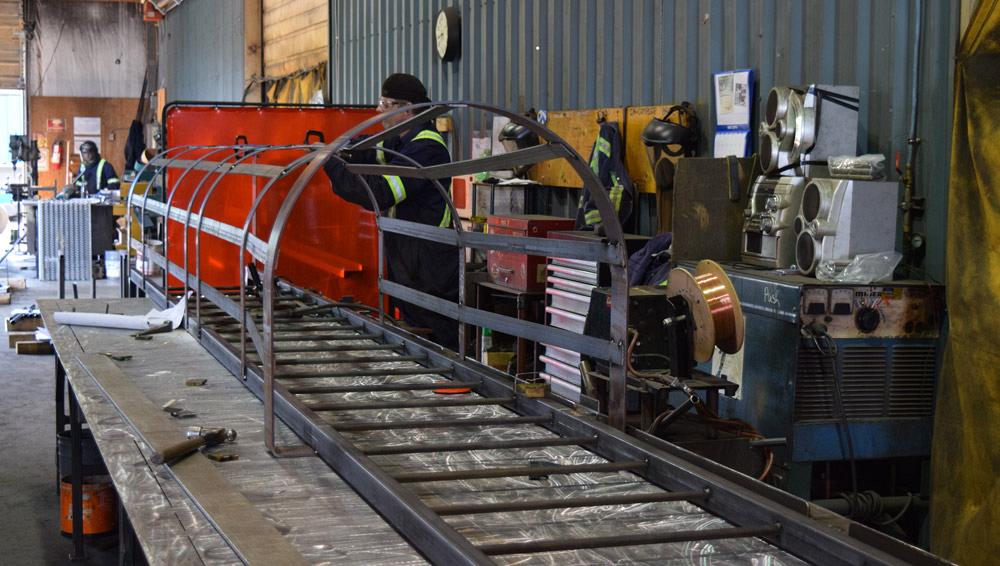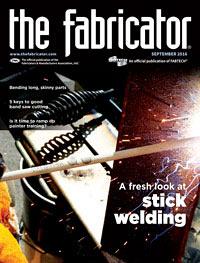Contributing Writer
- FMA
- The Fabricator
- FABTECH
- Canadian Metalworking
Categories
- Additive Manufacturing
- Aluminum Welding
- Arc Welding
- Assembly and Joining
- Automation and Robotics
- Bending and Forming
- Consumables
- Cutting and Weld Prep
- Electric Vehicles
- En Español
- Finishing
- Hydroforming
- Laser Cutting
- Laser Welding
- Machining
- Manufacturing Software
- Materials Handling
- Metals/Materials
- Oxyfuel Cutting
- Plasma Cutting
- Power Tools
- Punching and Other Holemaking
- Roll Forming
- Safety
- Sawing
- Shearing
- Shop Management
- Testing and Measuring
- Tube and Pipe Fabrication
- Tube and Pipe Production
- Waterjet Cutting
Industry Directory
Webcasts
Podcasts
FAB 40
Advertise
Subscribe
Account Login
Search
AI Industries builds with automation push
Over the past 12 years, the Surrey-based shop has changed the backbone of its business, and grown in the process
- By Rob Colman
- August 4, 2016
- Article
- Cutting and Weld Prep
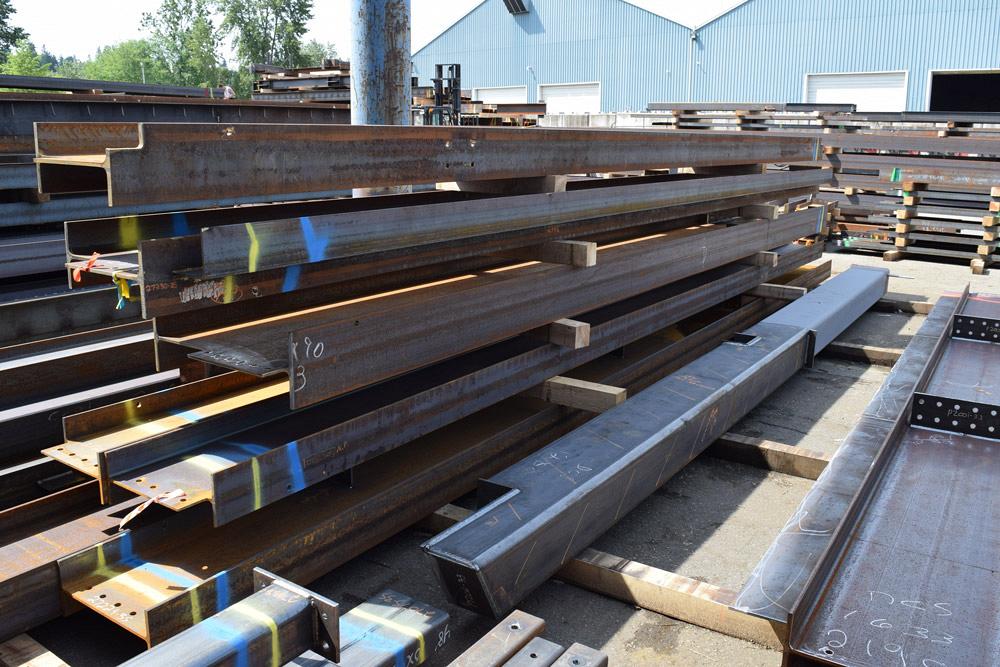
Figure 1
These structural steel sections are produced profitably thanks to AI Industries’ investments in equipment that has eliminated several manual tasks, such as manual layout instructions on beams.
Keeping a large structural steel shop viable in an overheated property market is fraught with challenges. Between the cost of property, taxes, and labor, profit margins can suffer without the proper approach to growth. With its focus on structural steel and steel fabrication, Surrey, B.C., Canada-based AI Industries has met these challenges head-on with careful investment in automation, while maintaining a strong core of fabricators on the shop floor (see Figure 1).
Broad Market Reach
AI Industries started out in local and provincial markets, fabricating structural and miscellaneous steel. The company primarily focused on medium-size projects such as shopping mall renovations, schools, and midsize office and multipurpose buildings. In the mid-1990s, management decided to diversify and head south to the U.S. to explore further construction activity.
The majority of AI Industries’ fabrication is done for the U.S. and Canadian markets. It has found a niche in Washington, Oregon, Hawaii, and Alaska school construction. It also fabricates military projects such as barracks, office buildings, hangars, and larger-scale office and multipurpose buildings.
New Team Members, New Ideas
The company has been through a number of changes in the past 15 years. For instance, the original company was founded by six partners in the early ’80s, at which time the shop did a large amount of spinoff work for Expo 86, such as the Main Street Skytrain rail expansion. But by the early 2000s it needed new management blood, so co-founder Amin Walji called on his son Karim to join the business.
“I was working for Deloitte in Edmonton at the time,” said Karim, who is an accountant. “I have a younger brother, Alim, who is a structural engineer and was always groomed to join the business. He worked for American Bridge on the Lions Gate Bridge redecking project. But at the time I joined AI Industries he was heading back to school to get his MBA.”
Amin couldn’t wait for two more years to start the change process at AI, so Karim joined the company to learn the business and add what he could to the bottom line. To understand the business, Karim went with his strength and dug into the financials.
“I took out a trial balance and went through every line item, trying to understand what our costs were,” he recalled. “Once you know what the costs are, you can get a better understanding of the business. That’s how I was trained.” Once his brother finished his MBA and joined the company, things got easier for Karim because he could count on his background on the structural steel side to make decisions.
With a strong understanding of both the financials and steel, the Walji family has taken AI to a new level of sophistication, in large part by careful investment in automation equipment.
Automation Inroads
It was in 2004 that AI bought its first automated system, a Peddinghaus BDL-760 CNC heavy-duty beam drill line. This was a big move at the time for what had been a financially conservative company. For example, when Karim first started, he had to pre–sent a cost-benefit analysis to get the shop to invest in a new fax/copy machine for the front office.
“It took us a couple of years to understand what we needed or what would make a difference to the business,” said Karim. “And it ended up being a real lifeline, getting that first piece of equipment and understanding what it could do and how it could help us.” (This drill line has since been replaced with a Peddinghaus PCD1100/3C drill line with a DG 1100 miter band saw, shown in Figure 2, which can drill and saw beams up to 44 in. wide.)
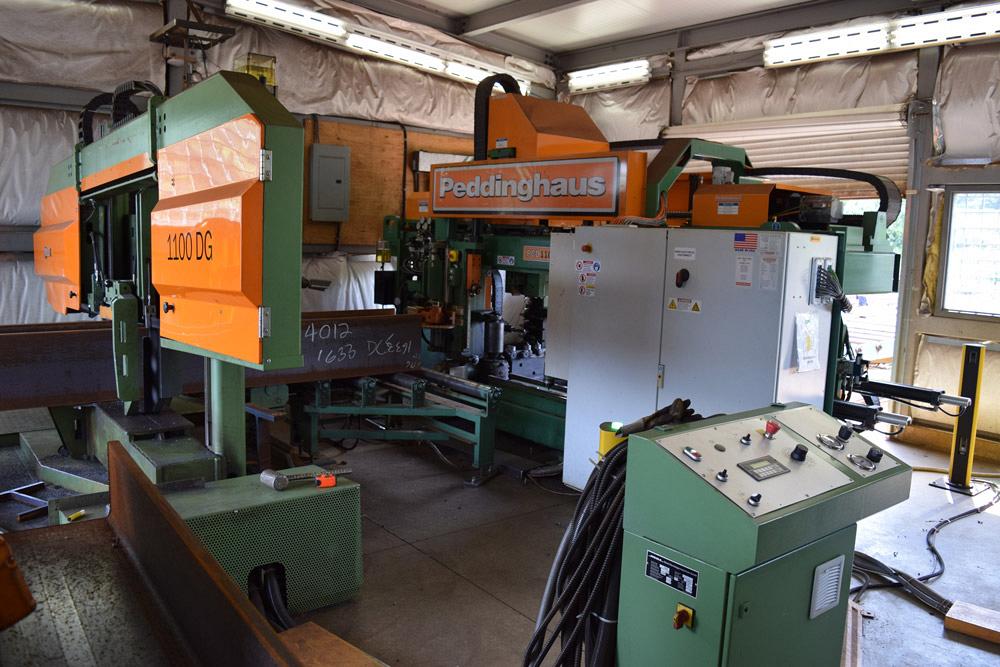
Figure 2
The Peddinghaus DG 1100 is kept in a shed, along with the company’s Advantage-2 drill line, because of space constraints on AI Industries’ property.
The next investment AI made was even more substantial: a Peddinghaus FDB-2500 plate processor (FDB stands for “flat, drill, burn”). It processes plates with thicknesses varying from ¼ in. to 3 in., widths of up to 96 in., and lengths of up to 20 ft. Plate shape and hole accuracy are guaranteed with an oxyfuel torch and a plasma unit for contoured cuts.
“We went down to Denver to see this machine in action, and I remember our shop foreman at the time was dead set against it, saying we didn’t need it,” said Karim. “We fought him on this, even though it was a hefty investment. It changed AI, and we got more confident that we could invest and make a difference with this automated machinery.”
As Karim explains it, the beam drill line was an easy sell because it removed a manual process. But the plate processor was different; much of that work was being subbed out at the time to plasma shops.
“We would shear and punch up to a certain thickness, maybe a quarter inch,” said Karim. “What the plate processor gave us was more control over production. We could then cut the plate when we needed to make something, not when the supplier could fit us in.”
Having that control allowed AI to deliver steel in a much more timely manner locally and in the U.S.
“Customer service is a critical part of the steel fabrication industry,” said Karim. “So while plate processing costs are and were a small part of our overall work, control means better, more reliable customer service. We run 24 hours, five days a week. The fact that we have everything in our control with the exception of forming is important to us. If there is a site problem and a customer needs some steel, we can get it to them within hours as opposed to running around to suppliers. Obviously, it has also increased our capacity.”
Precision for Assembly
A recent investment that AI has made has been a PeddiWriter (see Figure 3).
The PeddiWriter has been a huge difference-maker for AI. The CNC layout marking system does the work of a team of layout personnel (see Figure 4). It takes away a lot of the grunt work involved in manually laying out a profile. Parts flow through the machine one after another at high rates due to its dual-torch design. The Hypertherm plasma marking torches can mark simultaneously on two separate surfaces. Manually handling a beam with a crane is unnecessary as it is set up with a roller feed measurement. With the CNCs, it is relatively easy to operate, which Karim can attest to.
“The PeddiWriter has increased our efficiency by between 15 and 20 percent,” he said.
The challenge for AI was where to put the machine. The company has over 35,000 sq. ft. of fabrication space on more than 4.4 acres of land, but it’s a square plot, which makes material flow more than a touch problematic sometimes.
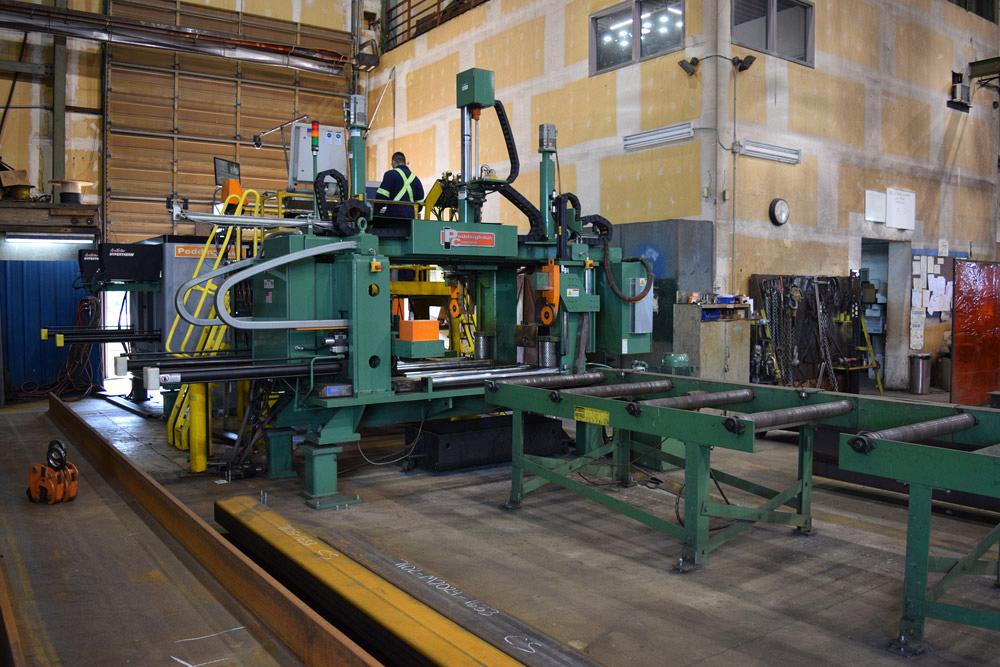
Figure 3
The PeddiWriter is set up in tandem with a coping machine to save space and increase productivity on the shop floor.
Karim asked representatives of local distributor Akhurst if they had ever put a PeddiWriter in tandem with a coping machine. Although they never had, no one saw any reason why such a setup wouldn’t work. So to save space, AI put the layout marking equipment in front of its already established Peddinghaus ABCM 1250 coper, an automated structural burning system that processes beams up to 50 in. wide. According to AI, it easily addresses typical burning processes such as flange bevels, copes, blocks, flange thinning and cutoff, as well as more challenging processes such as haunches, compound miters, castellations, and beam splitting.
Of course, take away one bottleneck and you always find a new one.
“Now that the fabricators on the shop floor just had to take the plate and tack it in to the marked parts, we found we were pushing steel out so quickly, our drill line couldn’t keep up,” said Karim.
The drill line had been kept busy processing a lot of angle, which wasn’t adding value anywhere else in the shop because once the holes on the angle were cut, the job was done. That’s when AI invested in the angle line, an Anglemaster 643/Q. A 6- by 6- by 5⁄8-in. clip angle with 12 holes can be punched, marked, and sheared to a finished length in less than one minute. Shim plates, cap plates, and similar connections also can be processed on the system.
Quality Team, Quality Partners
With automation always comes a fear that it will be a job destroyer. However, structural work is so competitive that automation is essential. As Karim noted, AI competes with Midwestern U.S. companies with both lower real estate and labor costs.
But automation hasn’t affected AI’s head count negatively. The company employed 30 people on the shop floor and seven in the office when Karim joined the company; there are now 65 in the shop and 18 in the office (see Figure 5).
The biggest challenge AI has locally is a lack of support for the structural steel industry. Due to strong wood and concrete industries, steel ends a distant third for consultants.
But Karim is upbeat, because AI Industries maintains its quality control at every level.
“We don’t cut corners, we are AISC-certified, and we go above and beyond what they demand,” he explained. “Also, we only deal with two to three detailers to ensure our work is delivered to the highest specifications. A good detailer can make a good fabricator look great.”
AI Industries, 604-583-2171, www.ai-industries.com
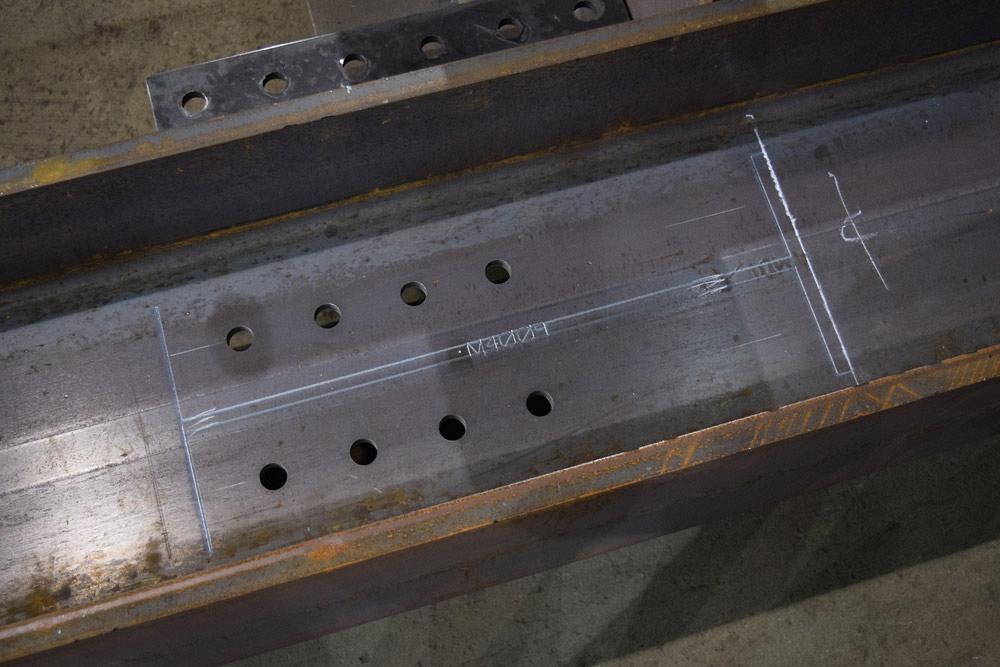
Figure 4
An example of the CNC layout marking system’s work is shown. Erectors can identify the part number of the workpiece and where to place the structural beam that is to be attached to it.
Akhurst, 888-265-4826, www.akhurst.com
Peddinghaus Corp., 815-937-3800, www.peddinghaus.com
About the Author

Rob Colman
subscribe now

The Fabricator is North America's leading magazine for the metal forming and fabricating industry. The magazine delivers the news, technical articles, and case histories that enable fabricators to do their jobs more efficiently. The Fabricator has served the industry since 1970.
start your free subscription- Stay connected from anywhere

Easily access valuable industry resources now with full access to the digital edition of The Fabricator.

Easily access valuable industry resources now with full access to the digital edition of The Welder.

Easily access valuable industry resources now with full access to the digital edition of The Tube and Pipe Journal.
- Podcasting
- Podcast:
- The Fabricator Podcast
- Published:
- 04/16/2024
- Running Time:
- 63:29
In this episode of The Fabricator Podcast, Caleb Chamberlain, co-founder and CEO of OSH Cut, discusses his company’s...
- Industry Events
16th Annual Safety Conference
- April 30 - May 1, 2024
- Elgin,
Pipe and Tube Conference
- May 21 - 22, 2024
- Omaha, NE
World-Class Roll Forming Workshop
- June 5 - 6, 2024
- Louisville, KY
Advanced Laser Application Workshop
- June 25 - 27, 2024
- Novi, MI
























